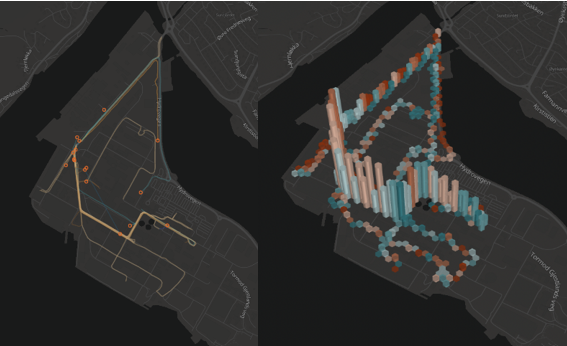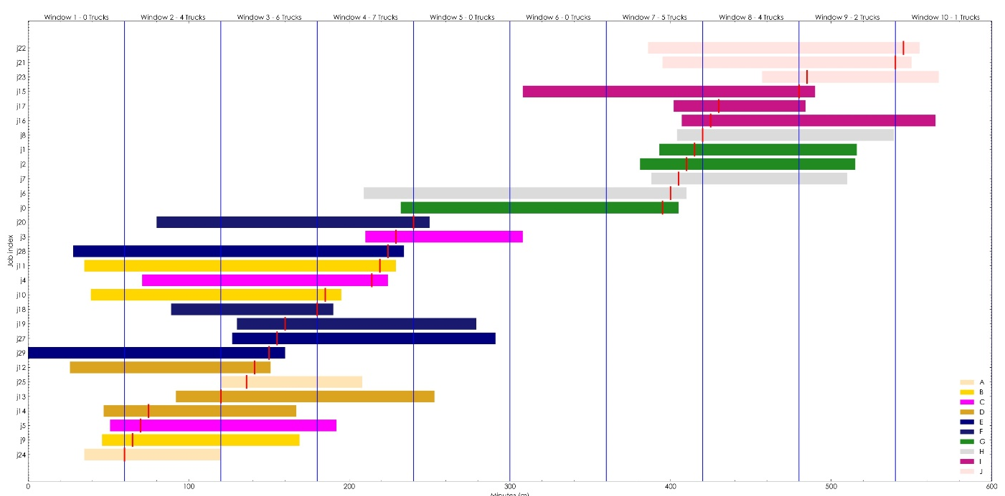Enabling toolkit to support Multimodal Traffic Management
The following article will describe a small subset of the tools that have been developed or are currently in development as part of the ORCHESTRA project.
Data sharing and governance
Data sharing is critical for scientific innovation and addressing societal challenges, such as optimizing transport operations. Effective data governance and sharing across stakeholders, transport modes, and networks can address security, privacy, and traceability concerns. Real-time data exchange has become especially important as transportation environments become more and more dynamic in nature.
Supporting Data sharing and governance within ORCHESTRA by the Mobility Insights tools, a tool for the continuous documentation of mobility patterns that can aid in the development of more sustainable and efficient transportation solutions for the future. The tool anonymously detects information on when, where, and how transportation occurs, providing valuable insights for planning the focus of future CAV operations and identifying potential areas for optimization.

Figure 1 : Map visualisation of trips and speed within examined area.
Dynamic transport demand management
Transport Demand Management is crucial for maximizing the efficiency of transport networks, including urban and freight operations. Measures may include promoting public transport, discouraging private vehicle use, and subsidizing environmentally friendly modes of transport. With increased connectivity between systems, new opportunities for dynamic transport demand management have emerged, replacing more static solutions.
ORCHESTRA’s Transport Ordering Tool enables dynamic transport demand management, by allowing the dispatch of autonomous vehicles for on-demand service through task assignment for specific times and destinations. The tool also enables booking of escort vehicle slots through a web solution or mobile app, with requests based on pickup or arrival time, position, and priority, and the ability to merge or cancel orders.
Demand capacity balancing
In order to ensure a smooth and uninterrupted transport network, it is essential to employ demand capacity balancing techniques that optimize operations and support the implementation of control measures. Accurate forecasting is a vital aspect of demand capacity balancing, as it enables the precise prediction and simulation of potential disruptions. Ultimately, the primary goal of capacity balancing is to maintain the network’s efficient functioning, even during abnormal or disruptive conditions, by minimizing any possible disturbances for users and provide efficient scheduling when applicable.
Scheduling of operations when considering the effect of multiple modes is one aspect that is addressed by the development of the Block-based scheduler for truck arrival smoothing for the Herøya Living Lab. The aim of the tool is to determine an assignment of trucks on different time-windows inside the day that maximizes satisfaction of the users’, while maintaining operational standards provided by the port and other modes operating within the port (e.g., vessels and trains).

Figure 2: Output Schedule for trucks (Red line indicates arrival at the Gate).
Decision support based on arbitration models
Resolving conflicts to balance individual and collective needs is an essential skill that the Traffic Orchestration will need to possess. Decision support is crucial to develop such characteristics as creation of robust protocols and arbitration strategies can greatly assist in situations such as determination of priorities. Decision support can also assist in evaluating extreme situations, such as disaster management, and coordination with other networks will be necessary to mitigate their effects and ensure safety.
In the context of ORCHESTRA, the Traffic Orchestrator Decision Support tool for disrupted airport users facilitates effective decision-making when rebalancing a transport network is necessary (e.g., a train failure) for users involved in the Milano Living Lab. By assigning users to alternative modes based on their proximity to flight departure, and dispatching resources in response to demand and the risk of missed flights, this tool is critical for minimizing disruptions for airport users. The tool’s efficacy is constantly revaluated to also optimizes gate assignments and security lanes under disruptive circumstances.